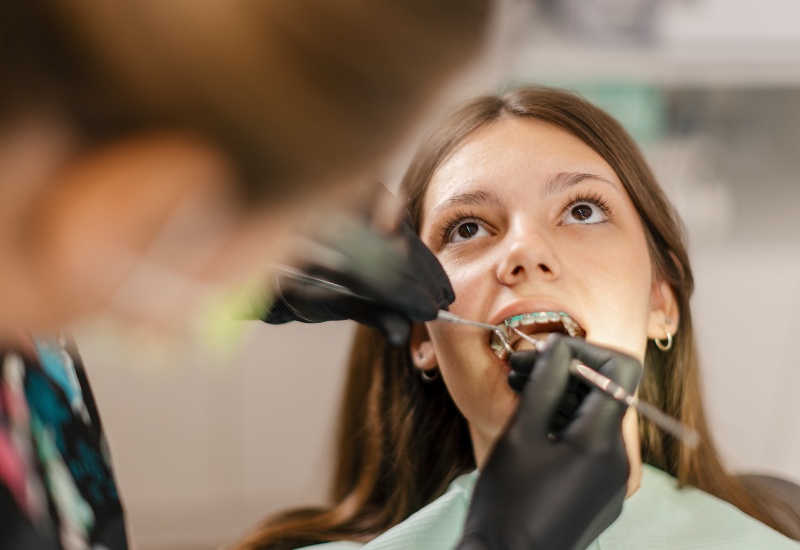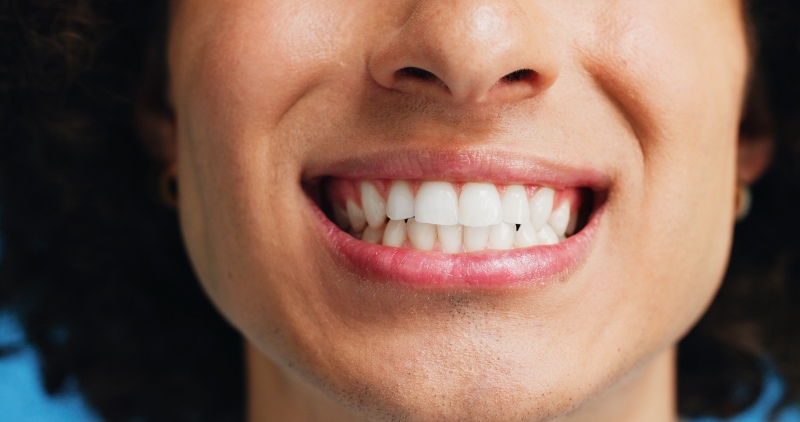How Braces Outcomes Differ Between Children and Adults
Orthodontic treatment is a valuable investment in long-term oral health and confidence. Whether initiated during childhood or adulthood, braces can correct misaligned teeth, improve bite function, and enhance the appearance of a smile. However, the outcomes of braces treatment can vary significantly depending on the age at which it begins.
At Dental Care of Westlake, we work with patients of all ages and understand the unique considerations that come with treating children versus adults. This article explores the differences in braces outcomes between these two groups and offers guidance for those considering orthodontic care.

Why Braces Are Needed
Braces are commonly used to address a range of dental concerns, including crooked teeth, overcrowding, gaps, overbites, underbites, and jaw misalignment. These issues can affect not only the appearance of a smile but also oral function and hygiene. Left untreated, they may lead to complications such as tooth decay, gum disease, and speech difficulties.
Orthodontic treatment helps align the teeth and jaws properly, improving both aesthetics and health. While the goals of treatment are consistent across age groups, the process and results can differ based on biological and lifestyle factors.
Differences in Braces Outcomes Between Children and Adults
One of the most significant differences in orthodontic outcomes between children and adults is related to bone development. Children’s jaws are still growing, which allows orthodontists to guide the development of the jaw and teeth more easily. This flexibility often results in faster and more predictable treatment outcomes.
In contrast, adults have fully developed bone structures, which can make tooth movement slower and more complex. Additionally, adults may have other dental concerns, such as gum recession, missing teeth, or previous dental work, that can influence the treatment plan.
Despite these challenges, adults are typically more consistent with oral hygiene and follow-up care, which can positively impact the overall success of treatment.

Benefits of Braces for Children
Children who begin orthodontic treatment early often experience several advantages. Because their bones are still developing, braces can help guide jaw growth and prevent more serious issues from arising later. Early intervention may also reduce the need for more invasive procedures in the future.
Improved self-esteem is another benefit. Children who receive braces during their formative years often feel more confident as their smiles improve. Also, properly aligned teeth are easier to clean, supporting better oral hygiene and reducing the risk of cavities and gum disease.
Benefits of Braces for Adults
Adults who pursue orthodontic treatment often do so with specific goals in mind, such as correcting long-standing dental issues or enhancing their appearance. Modern orthodontic options, including clear aligners and ceramic braces, offer discreet solutions that fit into professional and social lifestyles.
Braces can also improve oral health by making teeth easier to clean and reducing the risk of periodontal disease. For many adults, treatment leads to increased confidence and comfort, both personally and professionally.
Challenges of Braces for Each Age Group
Children may face challenges such as discomfort, difficulty maintaining proper hygiene, and the need for parental supervision. They may also feel self-conscious, especially if their peers are not undergoing treatment.
Adults may experience longer treatment times and may require additional procedures, such as extractions or periodontal therapy, before beginning orthodontic care. However, with proper planning and support, these challenges can be effectively managed.
Modern Orthodontic Options for All Ages
Today’s orthodontic technology offers a variety of treatment options tailored to individual needs. Traditional metal braces remain highly effective for complex cases. Ceramic braces provide a less noticeable alternative, while lingual braces are placed behind the teeth for added discretion. Clear aligners, such as Invisalign, are popular among adults and teens for their convenience and subtle appearance.
At Dental Care of Westlake, we offer customized treatment plans using the latest orthodontic techniques. Our team works closely with each patient to determine the most appropriate solution based on age, dental history, and lifestyle. Schedule a consultation today!
Tips for Successful Braces Treatment
Regardless of age, successful orthodontic treatment requires commitment and consistency. Patients should follow all care instructions, maintain good oral hygiene, and attend regular appointments for adjustments. After treatment, wearing retainers as directed is essential to preserve the results.
A positive attitude and clear communication with your orthodontist can also make the experience more comfortable and rewarding.
Visit Us Today
Braces can deliver excellent results for both children and adults, but the path to a straighter smile varies depending on age. Children benefit from early intervention and faster treatment, while adults enjoy access to modern, discreet options and the opportunity to correct long-standing issues.
If you are considering braces for yourself or your child, the team at Dental Care of Westlake is here to help. We provide expert guidance and personalized care to ensure the best possible outcomes.
Frequently Asked Questions
When should my child see an orthodontist?
The American Association of Orthodontists recommends an initial evaluation by age seven, even if treatment is not immediately necessary.
Can adults get braces if they have had previous dental work?
Yes. Many adults with crowns, implants, or other dental procedures can still benefit from orthodontic treatment. A customized plan will take these factors into account.
Are clear aligners as effective as traditional braces?
Clear aligners are effective for mild to moderate cases. For more complex issues, traditional braces may be recommended.
How long does treatment typically take?
Children often complete treatment in one to two years. Adults may require 18 to 36 months, depending on the complexity of their case.
Does insurance cover braces?
Coverage varies by provider and plan. Our team can assist you in understanding your benefits and exploring financing options.
